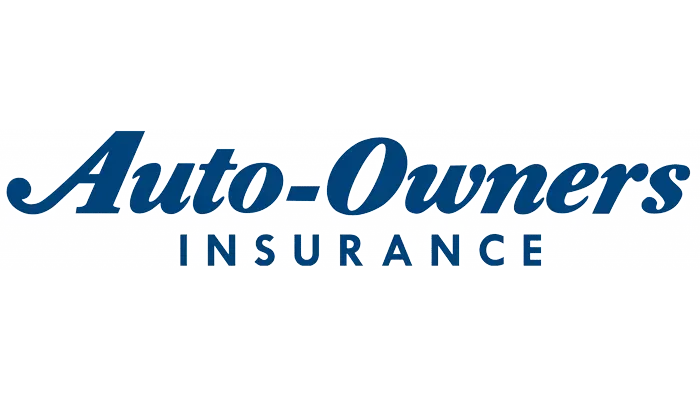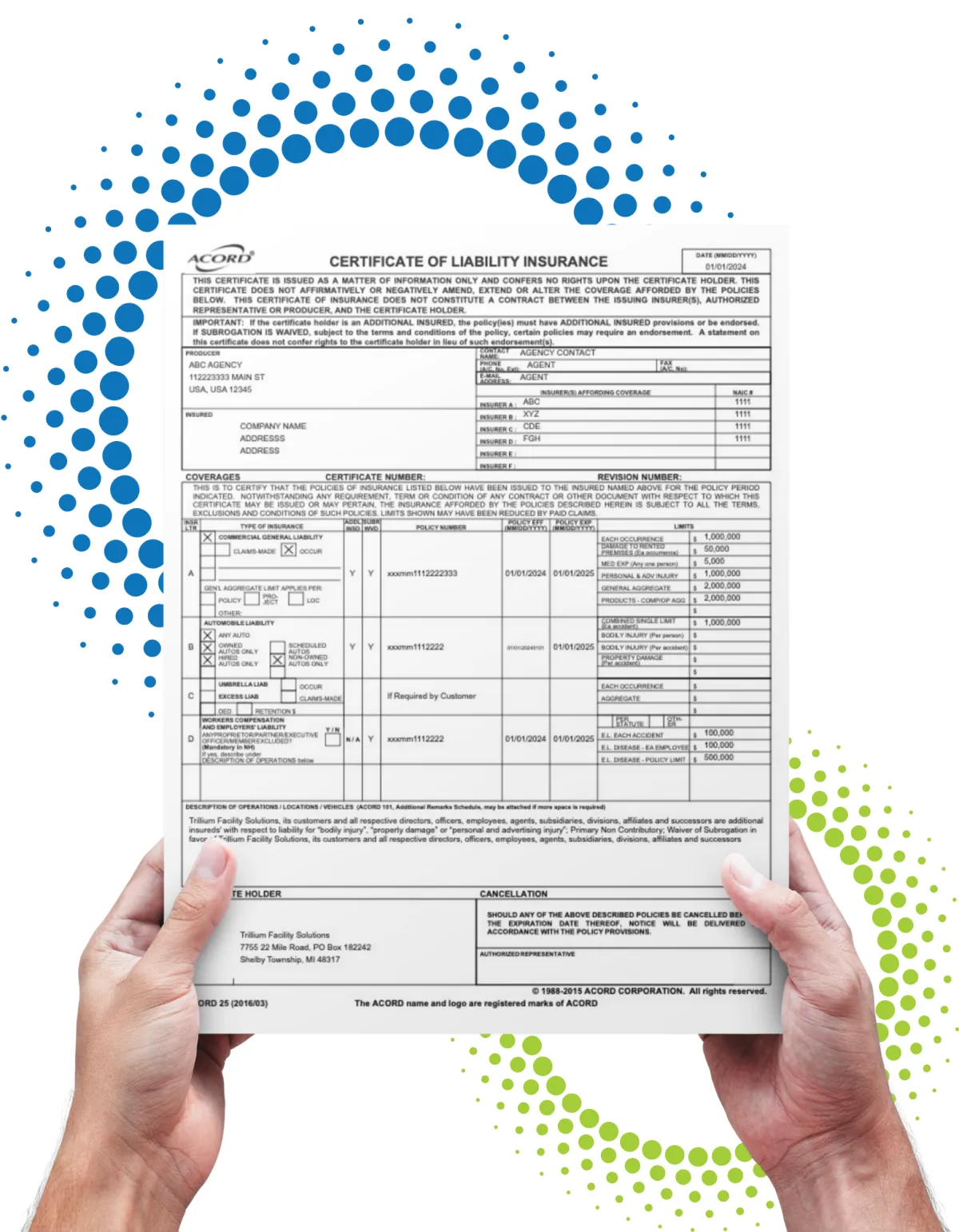Trusted by leading Brands for effective Coi management solutions






Customer Testimonial
Hey, I'm Bridgette!
Prior to SimpleCerts, COI management was manual and extremely time-consuming. After we started using SimpleCerts to organize thousands of local contractor insurance certificates in our platform, our compliance team saved hundreds of hours in a year, we reduced our risk, and created a simpler experience for our local contractors. I would highly recommend SimpleCerts for companies that want to improve the COI management process, reduce risk, and save money.
-Bridgette Lemke, Vice President | Operations & Compliance
We saved time
We saved money
We reduced risk
What our COI Tracker Includes
Complete certificate of insurance management that combines cutting-edge AI technology with expert human verification. SimpleCerts delivers affordable, fully managed COI tracking that eliminates compliance headaches for property managers, contractors, and risk professionals.

Fully managed COI Software Solution
Automated certificate collection, compliance tracking, and renewal management. Upload your requirements once and let our platform handle vendor onboarding, document verification, and ongoing monitoring. Real-time dashboards keep you informed without the manual work.

Most Affordable COI Solution
Enterprise-grade certificate of insurance software at small business prices. No hidden fees, setup costs, or per-user charges. Get unlimited policyholder certificates, automated compliance alerts, and dedicated support starting at industry-leading rates.

Human COI Verification Included
When compliance issues arise or certificates need follow-up, our certified risk management professionals step in to handle vendor communication and resolution. You get AI-powered efficiency with human expertise managing the complex situations that require personal attention.
Industries Rely on SimpleCerts COI Tracking
From construction and property management to healthcare and manufacturing, businesses across every industry trust SimpleCerts for seamless certificate of insurance management. Discover how our automated COI tracking solutions protect companies like yours from compliance risks while streamlining vendor management processes.
Recent Blogs & Articles

Trade License Verification Software | Complete Guide

Managing contractor licenses across multiple trades is one of the most challenging compliance tasks for property managers, facility directors, and procurement teams. Between HVAC technicians, electricians, plumbers, and specialty contractors, verifying that each tradesperson holds valid, current licensing can quickly become overwhelming.
Trade license verification software automates this critical process, helping organizations maintain comprehensive contractor credential tracking while reducing compliance risks and administrative burden.
What Is Trade License Verification Software?
Trade license verification software is a specialized platform designed to collect, store, verify, and monitor professional trade licenses from contractors and service providers. Unlike general document management systems, these platforms specifically handle the unique requirements of trade licensing including state-specific regulations, renewal schedules, and continuing education requirements.
Modern trade license verification solutions use AI-powered document extraction to automatically capture key license information including license numbers, trade classifications, expiration dates, issuing authorities, and specialty certifications. The software then monitors this information continuously, alerting both buyers and contractors when licenses approach expiration or fall out of compliance.
Why Trade License Verification Matters
Hiring unlicensed contractors creates significant liability exposure for property owners and facility managers. Beyond the obvious quality concerns, organizations face serious legal and financial consequences when working with improperly credentialed tradespeople.
Legal and Regulatory Risks: Most jurisdictions require specific trade licenses for electrical work, plumbing, HVAC installation, and other specialty services. Allowing unlicensed contractors to perform regulated work can result in code violations, failed inspections, permit issues, and substantial fines. In some cases, work performed by unlicensed contractors may need to be completely redone at the property owner's expense.
Insurance Coverage Issues: Many commercial insurance policies include provisions that void coverage if damage results from work performed by unlicensed contractors. This means a plumbing disaster caused by an unlicensed plumber could leave your organization fully liable for damages with no insurance recourse.
Quality and Safety Concerns: Trade licenses exist to ensure contractors meet minimum competency standards and stay current with industry best practices through continuing education. Unlicensed contractors may lack fundamental knowledge of building codes, safety protocols, or proper installation techniques.
Tenant and Stakeholder Confidence: For property managers and facility directors, demonstrating thorough contractor vetting including license verification builds trust with tenants, building owners, and other stakeholders. It shows a commitment to quality, safety, and professional operations.
Key Features of Trade License Verification Software
Effective trade license verification platforms offer several essential capabilities that differentiate them from basic document storage systems.
AI-Powered License Data Extraction: Rather than manually entering information from contractor licenses, advanced software uses computer vision and natural language processing to automatically extract relevant data including license numbers, issue dates, expiration dates, trade classifications, and licensing authority information. This eliminates data entry errors and saves significant administrative time.
Multi-State License Coordination: Contractors working across state lines often hold licenses in multiple jurisdictions, each with different renewal schedules and requirements. Quality verification software tracks licenses across all relevant states, providing a consolidated view of each contractor's credential status regardless of which state issued the license.
Automated Expiration Monitoring: The most valuable feature of trade license verification software is continuous monitoring with automated alerts. The system tracks expiration dates and sends notifications well in advance to both the contractor and the hiring organization. This proactive approach prevents compliance gaps and ensures licenses remain current throughout the business relationship.
Self-Service Contractor Portals: Modern platforms provide contractors with direct access to upload and update their own license documentation. This self-service approach shifts the burden of keeping credentials current to the contractors themselves while giving you full visibility and verification capabilities.
Compliance Dashboards and Reporting: Comprehensive dashboards show at-a-glance compliance status across your entire contractor network. You can instantly identify which contractors have valid licenses, which have licenses approaching expiration, and which contractors are out of compliance. Detailed reports help demonstrate due diligence to auditors, insurance carriers, and other stakeholders.

Types of Trade Licenses Commonly Tracked
Trade license verification software handles a wide range of contractor credentials across different trades and specialties.
HVAC Contractor Licenses: Heating, ventilation, and air conditioning work requires specialized licensing in most jurisdictions. HVAC contractors typically need licenses for installing, repairing, and maintaining climate control systems. Many states also require separate certifications for refrigerant handling and environmental compliance.
Electrical Contractor Licenses: Electrical work carries significant safety risks and is heavily regulated. Electrician licensing often includes multiple tiers such as apprentice, journeyman, and master electrician classifications. Your software should track not only the license itself but also the specific scope of work each license permits.
Plumbing Contractor Licenses: Plumbers need current licenses to work on water supply systems, drainage systems, and gas lines. Like electrical licensing, plumbing licenses often have different classifications for different types of work and require regular continuing education to maintain.
General Contractor and Specialty Trade Licenses: Beyond the major trades, verification software should handle licenses for specialty contractors including roofing contractors, fire sprinkler installers, elevator technicians, demolition contractors, and numerous other regulated trades. The platform needs flexibility to accommodate various license types and state-specific requirements.
How Trade License Verification Software Works
Understanding the typical workflow helps organizations implement and maximize value from license verification platforms.
Initial Contractor Onboarding: When you engage a new contractor, they receive an automated invitation to your contractor portal. The contractor uploads their relevant trade licenses through a simple interface. The AI-powered system immediately extracts key information including license numbers, expiration dates, issuing authorities, and trade classifications.
Document Review and Validation: While the system automates data extraction, certificates flagged for potential issues undergo review by compliance professionals who verify the license appears legitimate, covers the appropriate trade classifications, and meets your specific requirements. This human-in-the-loop approach catches issues purely automated systems might miss.
Continuous Monitoring: Once uploaded and validated, the system continuously monitors each license. As expiration dates approach, the platform sends automated reminders to contractors prompting them to upload renewed licenses. You also receive alerts about upcoming expirations so you can take action if contractors don't respond promptly.
Compliance Reporting: Throughout the relationship, you maintain real-time visibility into each contractor's license status. Compliance dashboards show overall credential health across your contractor network, and detailed reports document your verification efforts for audits or insurance reviews.
Benefits of Automated Trade License Tracking
Organizations that implement trade license verification software typically see substantial improvements across multiple areas.
Reduced Compliance Risk: Automated monitoring dramatically reduces the chances of inadvertently hiring contractors with lapsed or invalid licenses. The system catches issues before work begins rather than discovering compliance problems after the fact during audits or after incidents occur.
Significant Time Savings: Manual license verification requires considerable staff time to track down contractors, request updated documentation, verify information, and maintain records. Automated systems handle these tasks continuously in the background, freeing your team for higher-value work.
Improved Contractor Relationships: Rather than repeatedly asking contractors for updated credentials, self-service portals shift responsibility to contractors while maintaining transparency. Contractors appreciate clear expectations and streamlined processes, and timely reminders help them avoid letting credentials lapse.
Better Vendor Performance Visibility: When combined with certificate of insurance tracking, trade license verification creates a comprehensive contractor credential profile. You gain complete visibility into which contractors maintain professional standards and which contractors let credentials slide, informing future hiring decisions.
Audit Readiness: Whether facing internal audits, insurance reviews, or regulatory inspections, having comprehensive trade license records readily available demonstrates robust contractor vetting processes. The software provides detailed documentation of your verification efforts and compliance history.

Click here to get your instant COI management software quote
Choosing the Right Trade License Verification Software
When evaluating trade license verification platforms, consider several key factors to ensure the solution meets your organization's needs.
Industry-Specific Features: Look for platforms designed specifically for contractor credential management rather than generic document storage. Features like trade-specific license types, state regulation awareness, and contractor portal functionality indicate the platform understands your use case.
Integration Capabilities: The most effective systems integrate with your existing workflows whether that's property management software, vendor management systems, or accounts payable platforms. Seamless integration ensures license verification happens automatically as part of your normal contractor engagement process.
Scalability: Consider your current contractor volume and anticipated growth. The platform should handle your existing needs while accommodating expansion without performance degradation or prohibitive cost increases.
User Experience: Both your staff and your contractors will interact with the system regularly. Intuitive interfaces, clear communication, and straightforward processes encourage adoption and reduce support burden.
Support and Training: Implementing new software requires adequate support during setup and ongoing assistance. Evaluate the vendor's training resources, customer support responsiveness, and willingness to customize the platform for your specific requirements.
Implementing Trade License Verification Software
Successful implementation requires planning and clear communication with your contractor network.
Establish Clear Requirements: Before launching the platform, define exactly which trades require licensing in your jurisdiction, what classifications you'll accept, and any additional credentials you require beyond basic trade licenses. Document these requirements clearly so contractors understand expectations from the start.
Communicate with Your Contractor Network: Well before requiring license uploads, inform your existing contractors about the new system. Explain the benefits for them including streamlined credential management and automated renewal reminders, not just the compliance requirements you're imposing.
Phase Implementation Gradually: Rather than requiring all contractors to onboard simultaneously, consider phasing implementation by trade type or based on project volume. This allows you to work through any issues with a smaller group before full rollout.
Train Your Team Thoroughly: Ensure staff members who interact with contractors and manage compliance understand how to use the system effectively. They should know how to interpret compliance dashboards, respond to alerts, and troubleshoot common contractor questions.
Monitor and Refine: After launch, track key metrics including contractor response rates, time to upload credentials, and compliance rates. Use this data to identify bottlenecks and refine your processes for better results.
Beyond Trade Licenses: Comprehensive Contractor Credentialing
While trade license verification is critical, the most effective contractor management approaches combine license tracking with certificate of insurance verification. Together, these create a complete picture of contractor credibility and compliance.
Certificates of Insurance (COIs): Even properly licensed contractors must maintain appropriate insurance coverage including general liability, workers' compensation, and often professional liability or contractor's pollution liability insurance. COI tracking verifies contractors carry adequate coverage to protect your organization from liability exposure.
Holistic Credential Verification: Modern platforms integrate both trade license verification and certificate of insurance tracking in a single system. This consolidated approach means you verify all critical contractor credentials through one platform rather than managing separate systems for licenses and insurance.
Complete Contractor Profiles: When you combine license data, insurance information, past project history, and performance ratings, you build comprehensive contractor profiles that inform better hiring decisions. You can quickly identify contractors who consistently maintain proper credentials versus those who let things slide.
Common Challenges in Trade License Management
Understanding typical obstacles helps organizations prepare for potential issues during implementation and ongoing operations.
Multi-State License Complexity: Contractors working across state lines often hold licenses in multiple jurisdictions, each with different requirements and renewal cycles. Quality verification software addresses this by tracking licenses from all relevant states and understanding state-specific regulations.
Varying License Types and Classifications: Different states use different terminology and classification systems for the same trades. A master plumber license in one state might be equivalent to a journeyman license in another. Experienced verification platforms understand these nuances and can map different license types appropriately.
Contractor Resistance: Some contractors initially resist new credential verification requirements viewing them as administrative burden. Clear communication about mutual benefits including automated renewal reminders and streamlined compliance typically overcomes resistance. Making the process as simple as possible through intuitive portals also helps.
Keeping Pace with Regulatory Changes: Trade licensing requirements evolve as states update regulations. Quality software vendors stay current with these changes and update their platforms accordingly so you don't need to track regulatory changes yourself.
Industry-Specific Applications
Trade license verification software benefits any organization that engages contractors, but certain industries face particularly acute needs.
Property Management: Property managers work with numerous contractors across multiple trades for routine maintenance and emergency repairs. With tenant safety and satisfaction at stake, verified contractor credentials are essential. Trade license software helps property managers maintain compliant contractor networks across entire portfolios.
Facility Management: Corporate facilities, healthcare campuses, educational institutions, and other large facilities require constant maintenance from various trades. Facility managers need confidence that contractors working on campus are properly credentialed, making automated verification critical for operations.
Construction Companies: General contractors and construction managers engage numerous subcontractors across different trades for each project. Trade license verification ensures all subcontractors hold appropriate credentials before work begins, reducing project delays and liability exposure.
Commercial Real Estate: Building owners and commercial property portfolios require contractor credential verification to protect their investments and maintain property values. Automated license tracking demonstrates professional property stewardship to tenants and investors.
Measuring ROI on Trade License Verification Software
Organizations considering trade license verification platforms should evaluate return on investment across several dimensions.
Time Savings: Calculate current staff hours spent on manual license verification including requesting documents, reviewing credentials, maintaining records, and tracking renewals. Compare this to the minimal time required to oversee an automated system. Even modest staff time savings often justify the software investment.
Risk Reduction: While harder to quantify, avoiding even a single incident involving an unlicensed contractor can save enormous costs in remediation, legal fees, and potential liability. Trade license verification software provides ongoing risk mitigation that compounds over time.
Improved Contractor Quality: When contractors know you verify credentials thoroughly, you attract more professional vendors who take licensing seriously. Higher quality contractors typically deliver better work with fewer issues, improving operational efficiency even beyond direct compliance benefits.
Audit and Insurance Benefits: Some insurance carriers offer premium reductions when organizations demonstrate robust contractor vetting processes. Additionally, smooth audits without compliance findings avoid potential penalties and maintain good standing with regulators.

Click here to get your instant COI management software quote
The Future of Trade License Verification
Technology continues to evolve, bringing new capabilities to contractor credential management.
Enhanced AI Capabilities: Artificial intelligence is becoming more sophisticated at extracting data from complex documents, understanding licensing requirements across different jurisdictions, and even predicting compliance issues before they occur based on historical patterns.
Direct State Database Integration: Some platforms are beginning to integrate directly with state licensing databases for real-time license status verification rather than relying solely on contractor-uploaded documents. This provides additional validation and catches issues if contractors attempt to misrepresent their credentials.
Mobile-First Design: As contractors increasingly work from tablets and smartphones, verification platforms are optimizing for mobile use. Contractors can snap photos of licenses and upload directly from job sites, streamlining the documentation process.
Blockchain Verification: Emerging blockchain-based credential verification creates tamper-proof records of contractor licenses and certifications, potentially reducing fraud and simplifying verification across organizational boundaries.
Getting Started with Trade License Verification
Organizations ready to implement trade license verification should follow a structured approach.
Assess Current State: Document your current contractor volume, the trades you typically engage, and your existing verification processes. This baseline helps measure improvement after implementation and informs your software requirements.
Define Requirements: Clarify which licenses are mandatory for different types of work, what documentation you'll require, and how you'll enforce compliance. Establish these policies before selecting and implementing software.
Evaluate Solutions: Research available platforms, request demonstrations, and speak with other organizations in your industry about their experiences. Focus on platforms specifically designed for trade license and contractor credential verification rather than generic document management.
Plan Implementation: Create a detailed rollout plan including contractor communication, staff training, timeline for full implementation, and metrics for measuring success. Allow adequate time for contractors to comply with new requirements.
Launch and Optimize: Roll out the platform according to your plan, provide robust support during the transition period, and continuously gather feedback for improvement. Monitor compliance rates and refine processes as needed.
Setup your account with SimpleCerts
Trade license verification software transforms contractor credential management from a burdensome administrative task into a streamlined, automated process. Organizations that implement these platforms reduce compliance risk, save significant staff time, improve contractor relationships, and build more professional vendor networks.
As regulatory requirements continue to increase and liability concerns grow, automated trade license tracking is becoming essential infrastructure for any organization that relies on contractors. The technology exists to make verification simple, comprehensive, and continuous.
For property managers, facility directors, risk managers, and procurement teams drowning in contractor paperwork, trade license verification software offers a clear path to better compliance, reduced risk, and more efficient operations. The return on investment comes not just from time savings and risk reduction, but from the confidence that every contractor in your network holds proper credentials to perform their work safely and professionally.

Frequently Asked Questions
What is COI management software?
COI management software is a digital platform that automates the collection, tracking, and verification of certificates of insurance from vendors, contractors, and suppliers. SimpleCerts streamlines this process by automatically checking uploaded insurance documents against your company's specific requirements, highlighting discrepancies, and sending automated renewal reminders when certificates are about to expire.
How much does COI tracking software cost?
COI tracking software costs vary based on features, scale, and providers, with prices ranging from a few hundred to several thousand dollars annually. SimpleCerts offers the most affordable solution in the industry with transparent pricing that includes unlimited vendor certificates, automated compliance monitoring, and human oversight - all without hidden fees or per-user charges.
What is the difference between a COI and an insurance policy?
While not an insurance policy, a certificate of insurance (COI) contains essential details proving one was issued and exists. These single-page forms include the policyholder's name, effective and expiration date, type of coverage, additional insured and waiver of subrogation, and policy limits. SimpleCerts automatically extracts and verifies all this critical information from uploaded certificates.
How long should I keep certificates of insurance on file?
In a perfect world, a COI should be kept forever because a claim can arise anywhere down the line. The amount of time you keep a certificate on file depends on the nature of your organization and where you are located, but in general, certificates should be retained for a minimum of five years. SimpleCerts provides secure, unlimited cloud storage for all your certificates with easy search and retrieval.
Can vendors upload their own certificates?
Yes! SimpleCerts provides a user-friendly portal where vendors can directly upload their certificates of insurance. Both the producer and the insured can submit their documents. A lot of times we see the producer will submit something then the insured will go in and submit more information. Our system automatically processes and verifies each submission against your requirements.
What happens if a vendor's insurance doesn't meet our requirements?
SimpleCerts automatically identifies compliance deficiencies and sends customizable notifications to vendors explaining exactly what coverage is missing or inadequate. Our human oversight team can follow up with vendors to resolve complex compliance issues, ensuring you maintain 100% compliant coverage across your vendor network.
Does SimpleCerts integrate with existing business systems?
Yes, SimpleCerts is designed to integrate seamlessly with popular accounting, procurement, and project management systems. Our API allows for smooth data flow between platforms, ensuring your COI compliance data is accessible where you need it most.
How accurate is automated COI processing?
While there is no perfect OCR (optical character recognition) technology, our software migrates 98% of the data from an insurance certificate during the migration process. SimpleCerts combines AI-powered document processing with human expert verification to ensure maximum accuracy while maintaining fast processing speeds.
What industries benefit most from COI tracking software?
Nearly every industry is required to be compliant with insurance. From the retail store where you buy your shirts to the transportation company that delivers those shirts, everyone needs to ensure compliance with COIs. SimpleCerts serves property managers, general contractors, facility managers, risk managers, and any business working with third-party vendors or suppliers.
How quickly can SimpleCerts be implemented?
SimpleCerts is a cloud-based solution requiring no software installation. Most organizations can be up and running within days. Our team provides migration assistance to transfer your existing certificates and requirements into the system, plus comprehensive training to ensure your team can immediately start benefiting from automated COI management.


